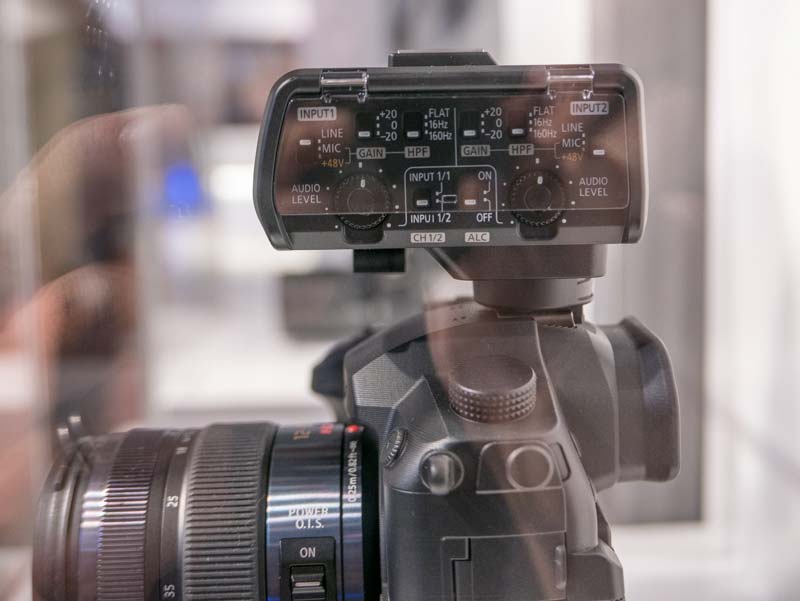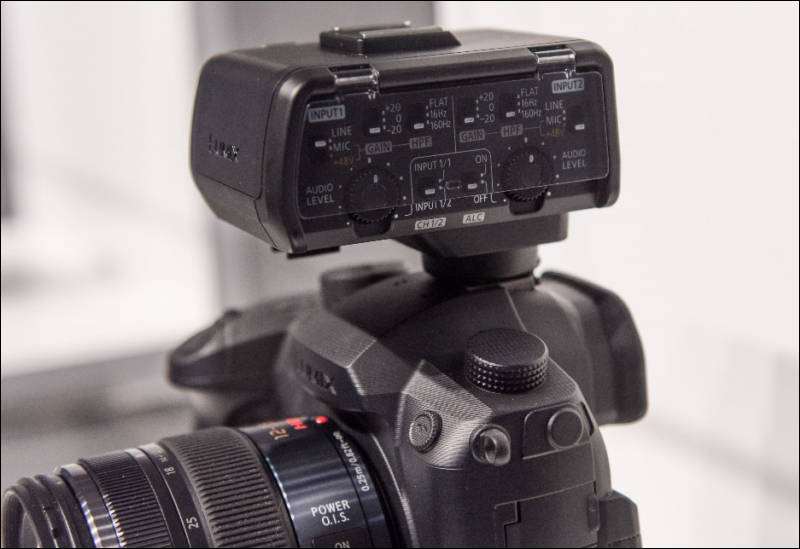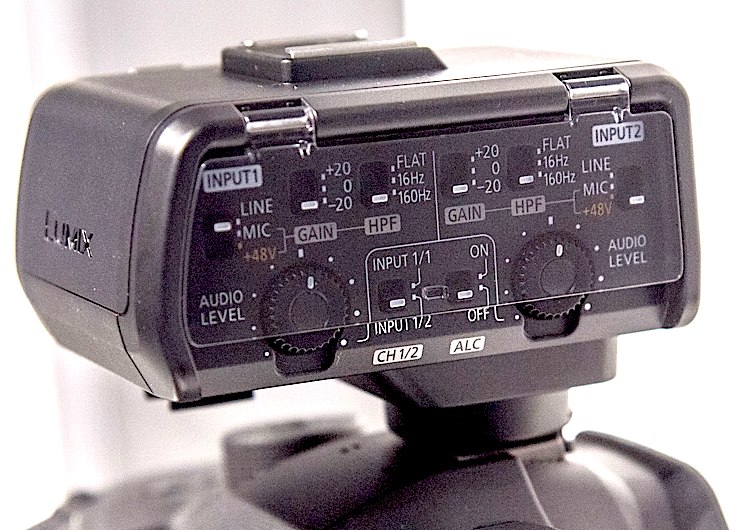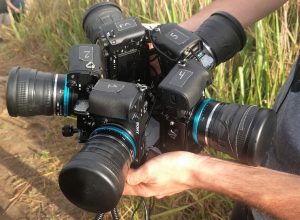Looks like the bastard awful days of micro HDMI might be over? I’ve heard from a Panasonic GH5 tester that it will have *full size* HDMI! (am very happy to hear that!) One stop better as well, and IBIS too.
In other news, we can see this on top of the GH5 body at Photokina:
Very pleased to see, as I have many times suggested, that Panasonic should go with a Sony XLR-K2M audio addition instead of doing another YAGH again!
While it is exciting reading about all the new features the Panasonic GH5 will bring (such as 4K 60fps or 4K 30fps 10bit 422), it is somewhat depressing reading on other places on the internet how quick the anti-MFT trolls are out, and of course their first red herring is “but it sucks at low light”.
This low light argument reminds me of the megapixel race, sure there was big benefits from going from 2 megapixels to 5 megapixels, then to 12 megapixels, but then at around 16 megapixels to 24 megapixels range… the arguments got a lot weaker. And for 99.9% of users we don’t need 50 megapixels!
Ditto low light, not being constrained by 50 ISO film is AWESOME, then getting to 200 ISO… great! And now we can do workable 800 and 1600 and even 3200 ISO!
The Panasonic GX85 is as good in lowlight as the new Canon 5Dmk4 (but the GX85 is a fraction of the cost! & has better detail):
Let’s assume GH5 carries on and is one stop better even than that? How is that not a very workable ability to handle?
Do we NEED to have clean 100,00 ISO?? Nah, that is over the top in nearly all cases. Like having a 100 megapixel camera (for some people they’ll *need* that, but for most of us it is serious overkill and a bad compromise to purchase a 100 megapixel camera).
Plus remember there is the Metabones Speed Booster XL that gives Micro Four Thirds an extra 1.3 stop gain with the lens you’re using, nothing else has that aside from MFT. And Micro Four Thirds mount has access to a uniquely wide range of very fast lenses (I love my SLR Magic 25mm T0.95!).
I’d rather pass on the unnecessary over the top extreme high ISO capabilities and have instead the well polished and extensive range of features that the GH5 will have (just like Panasonic had each time with the GH1/GH2/GH3/GH4, relative to the other cameras of their time). So while yes I agree, better lowlight would be nice, let’s keep some perspective about this (when do you ever hear anyone complaining about lowlight from a new Canon APS-C release?!).



